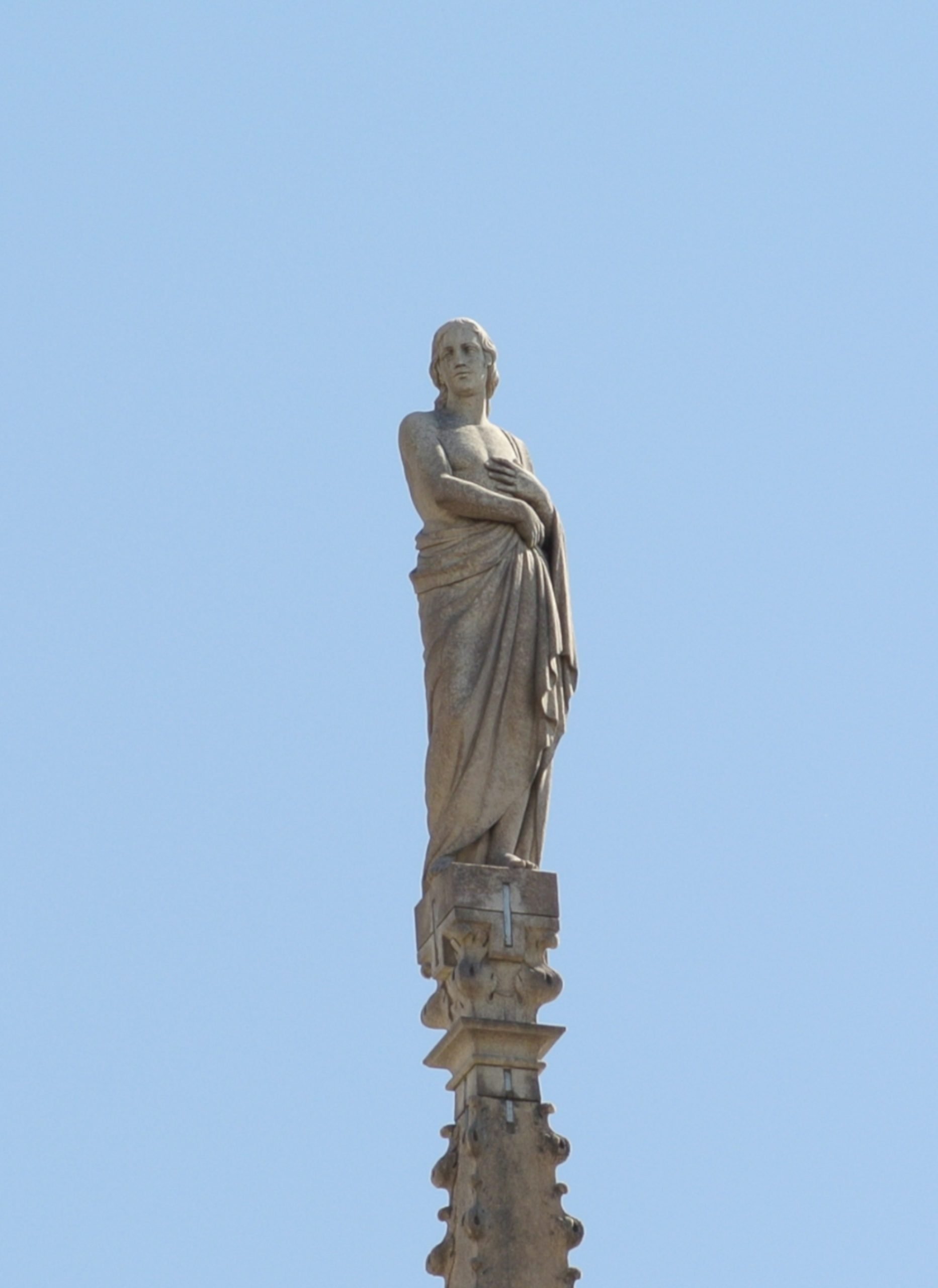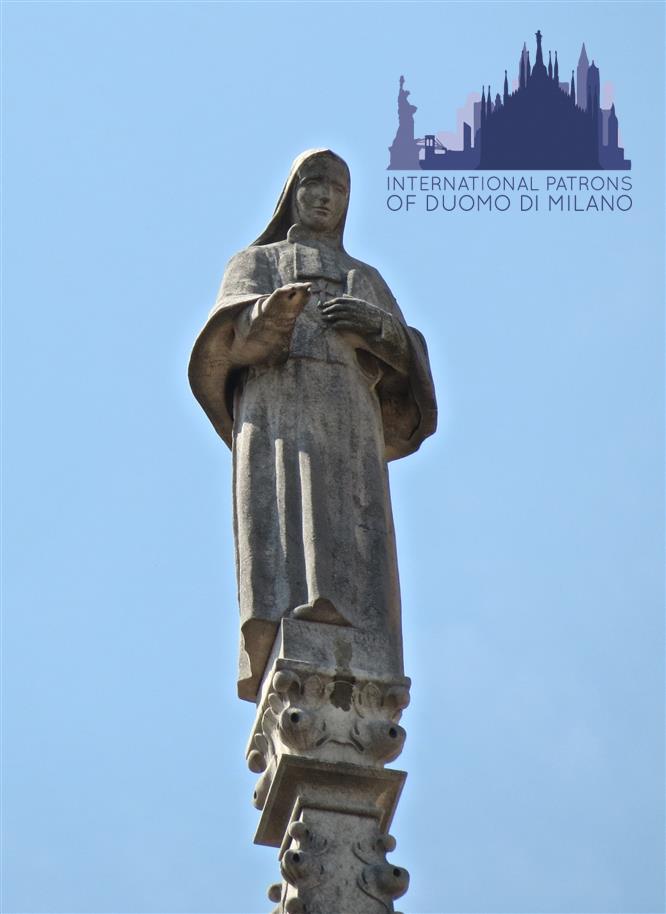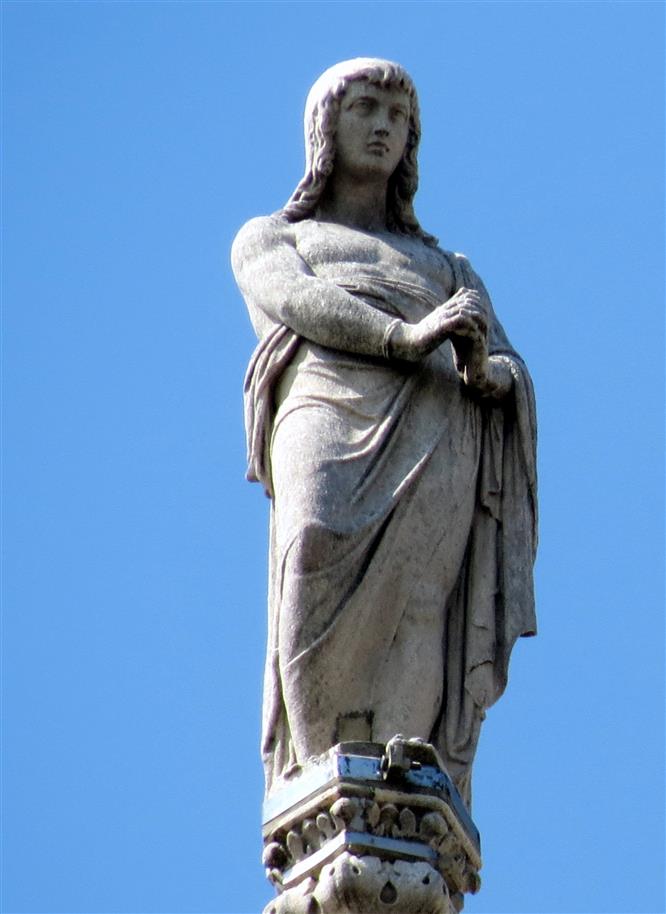San Dioclezio, along with other Christian companions, including Antimo (Antimus), was a prisoner in the Roman province of Asia at the time when Emperor Diocletian divided the empire into two parts and launched a persecution against Christians. One Faltonio Piniano, a nobleman from The Marches who was managing a difficult and tumultuous region, was Proconsul of the province. The story goes that Piniano fell seriously ill, and after medical treatment failed, his wife contacted Christian prisoners, asking for advice. Antimus, the priest of this community, told her that her husband would be healed only if he converted to Christianity. And this came to pass. To show his gratitude, the Proconsul committed to release as many Christians as he could, who were present in the region, hiding them in his estates. They included Dioclezio who, along with Sisinnio (Sisinnius) and Fiorenzo, obtained a land in Osimo. But there peace was short-lived: the three were stoned by the ferocious crowd because they refused to make sacrifice to the pagan gods. The name of Dioclezio is cited even in the Martyrologium Hieronymianum. The monastery of S. Fiorenzo was built on his tomb, and the remains of the three were finally moved to the Cathedral of Osimo in 1437. It has been ascertained that the statue in question portrays San Dioclezio, as also confirmed by the name etched on the base. However, little is still known about the date of execution of the original and about its author. The figure present today on the Spire is, in fact, a reproduction made in 1953. Despite its limited motion, the statue appears sinuous. The still, tense hands bound by a string contrast with the Saint’s robes, whose wide folds enhance both volume and movement. The masterly sculpted face has regular features and is framed by a thick beard and hair.
ST. DIOCLETIUS
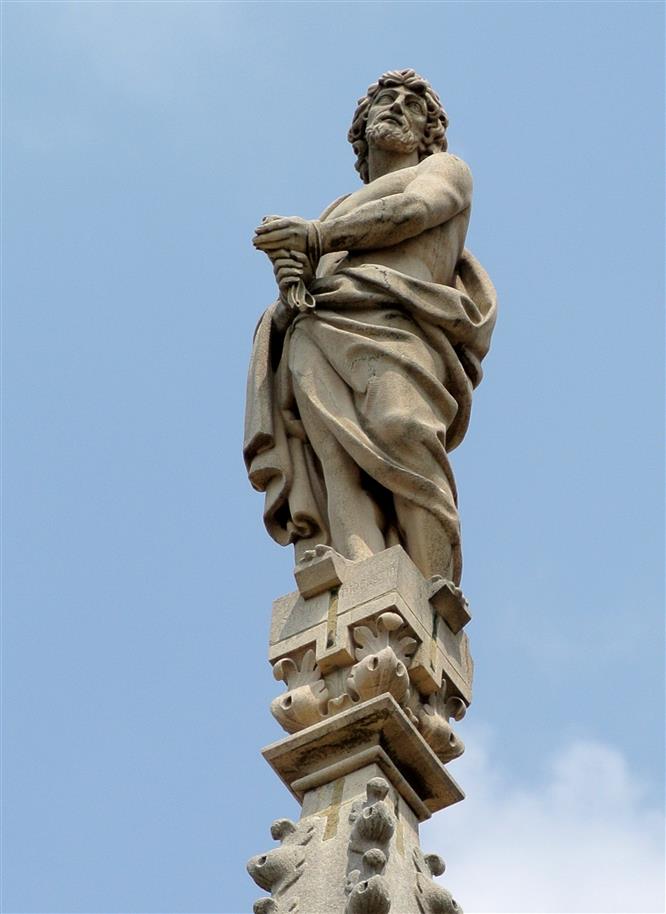
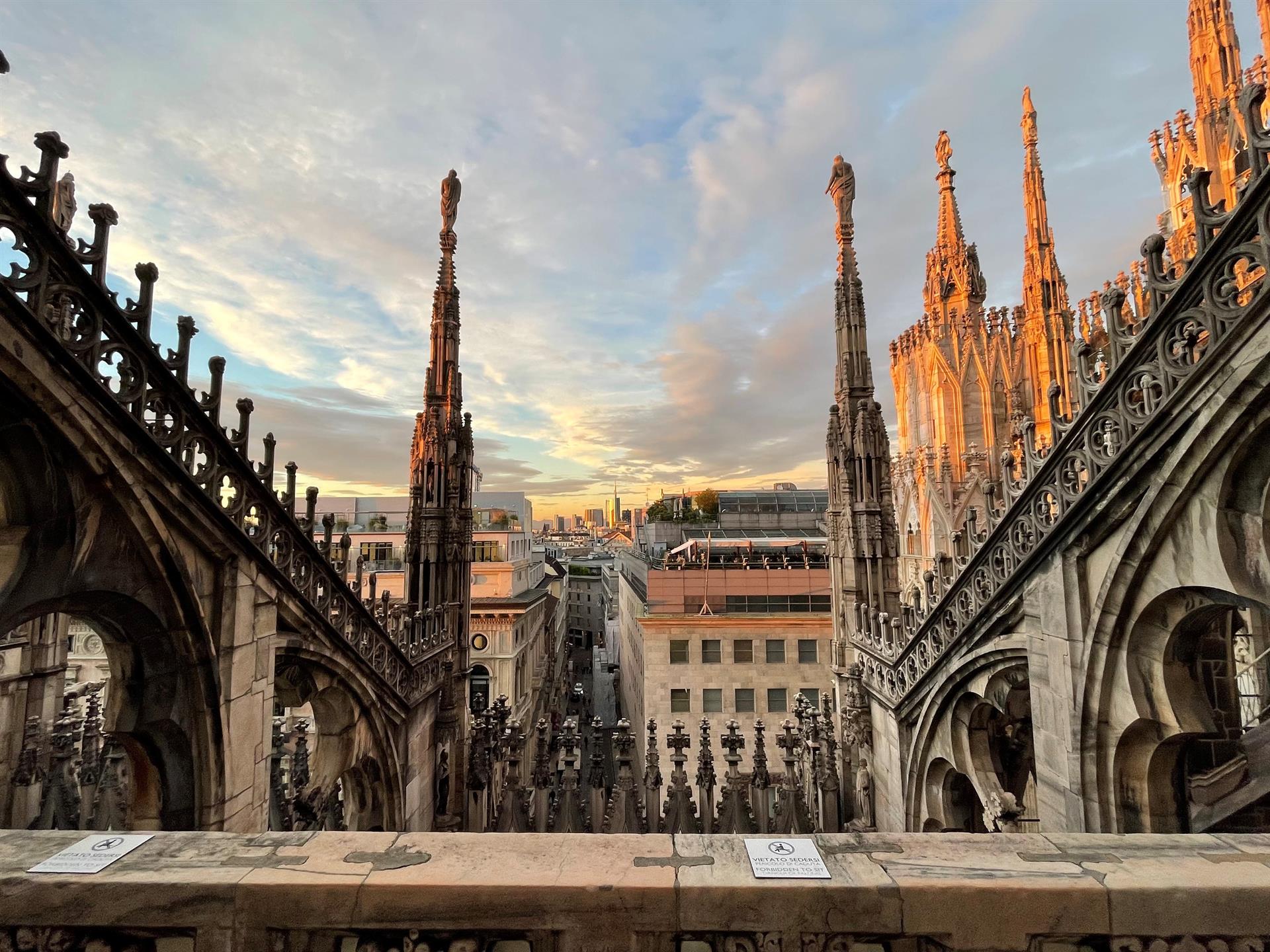
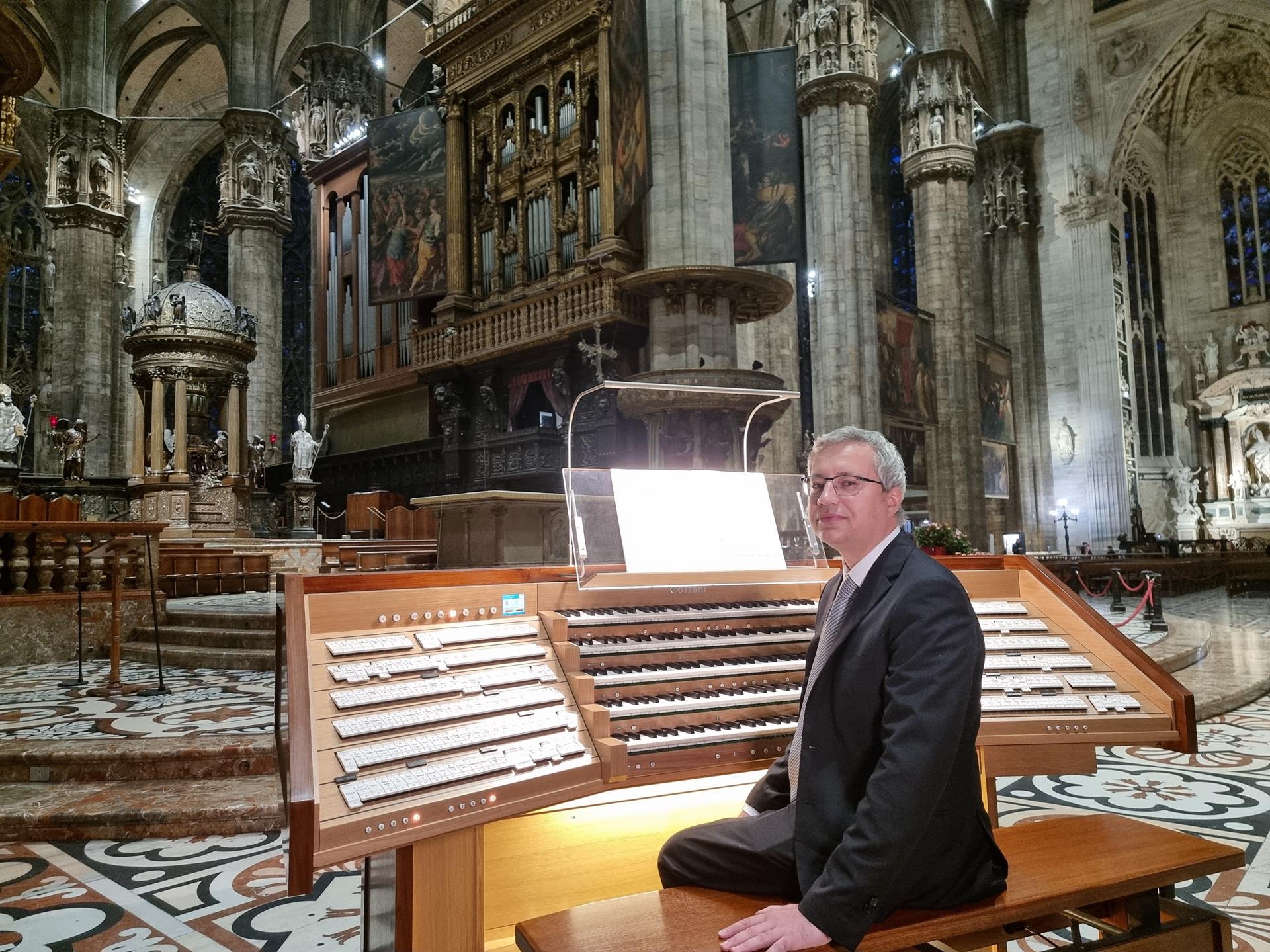
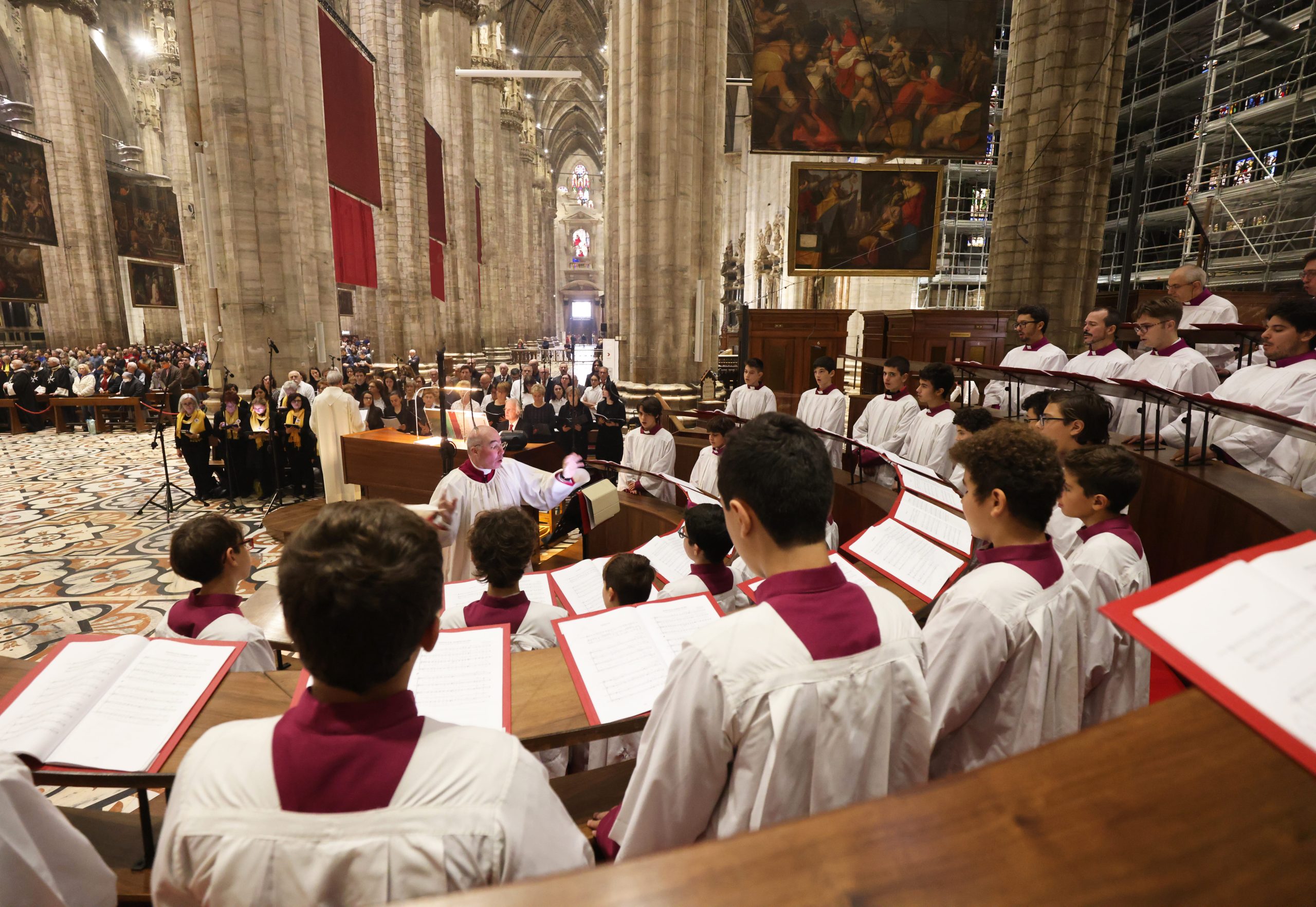
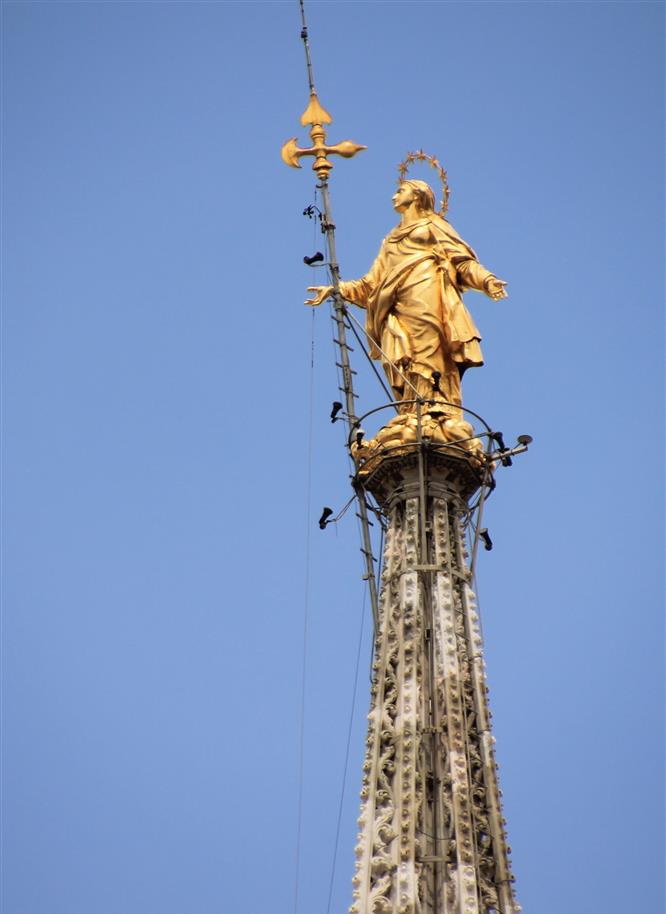
 Tiburio
Tiburio